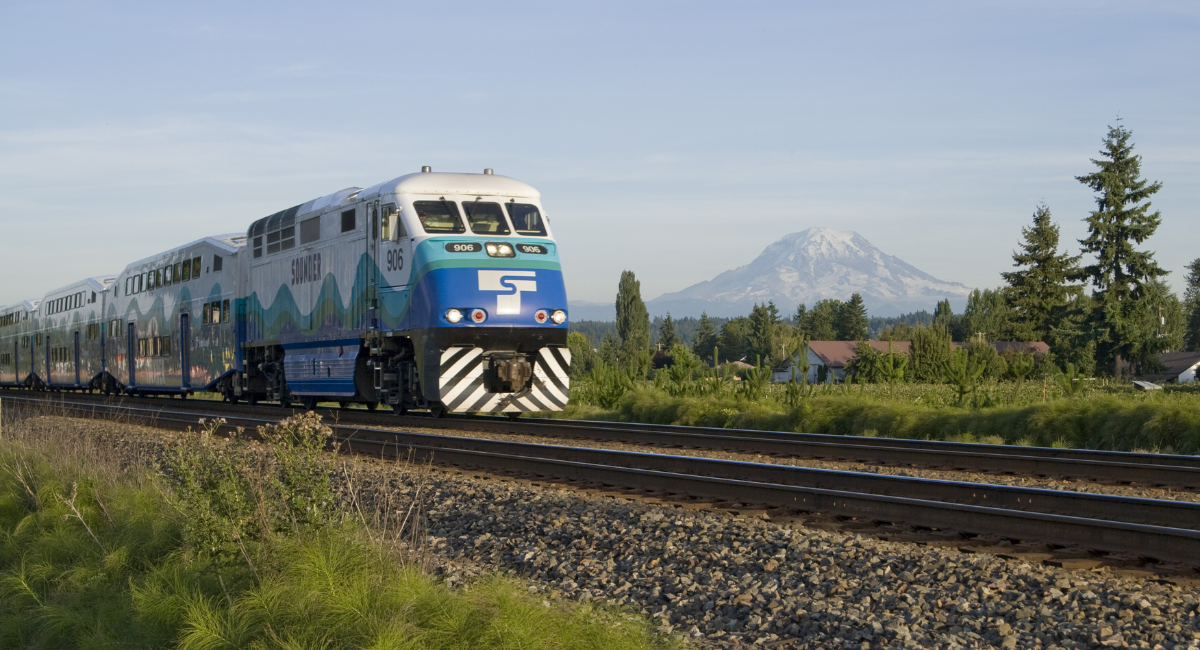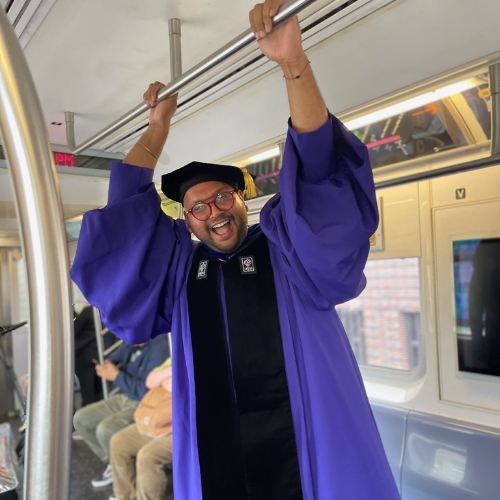
Photo credit: Sound Transit
In September, epidemiology assistant teaching professor Simon Sandh embarked on a journey from Seattle to Portland using only public transportation. For Sandh, a faculty in the University of Washington School of Public Health, this meant no use of Amtrak trains or long-distance bus companies, only the local transit options available to communities along the I-5 corridor.
The journey took Sandh 12 hours. Along the way he saw how these Washington and Oregon transit routes, especially in communities outside of large urban centers, are essential for connecting people to opportunity, health care, and each other.
“This experience reminded me that transportation is about equity, and every delay or gap in public transit infrastructure represents a potential health disparity in motion,” Sandh said.
In this Q&A, Sandh shares why public transit is an important component of public health.
What inspired you to take a journey from Seattle to Portland using only public transportation?
It started as pure curiosity. I came across a Reddit thread claiming it was possible to get from Seattle to Portland using only the regional transit systems. That idea really stuck with me, especially since I had recently watched the YouTuber AdamDoesNotExist, who had just done a series traveling up the West Coast using only public transit. Growing up in New York City, public transit has always been part of how I understood movement, independence, and connection, so this trip felt like a natural extension of that. I was inspired to see what adventure I could make out of an otherwise routine trip, and as I reflect, it turned into a much bigger adventure than I bargained for. It revealed a lot about connection, equity, and how we move through the world to access things like work, care, and opportunity. Thanks to several zero-fare buses and my Husky card, for $1 I got one of the most memorable public health field experiences I’ve ever had.

What was the best part of using public transit for this journey? What was the most challenging part?
The best part was how unexpectedly beautiful and human the trip felt. I saw parts of Washington and Oregon that I’d never encountered, including cities, small towns, stretches of farmland, and communities that exist just outside the usual travel routes. Every transfer felt like stepping into a different ecosystem of people and stories. The most challenging part was simply endurance. Twelve hours of travel and multiple transfers means constantly paying attention. I had to make sure I was at the right stop, on the right side of the street, and able to catch the next connection on time. But even that challenge made me appreciate how much effort people put in every day just to get where they need to go.
Did you interact with other passengers or transit workers during your trip? If so, did those conversations reveal anything about the importance of public transit for communities?
Outside of sharing space with other riders, I didn’t interact with many people directly, but I quietly observed how they interacted with one another. It revealed so much about the sense of community that can form around public transit. Many of the bus drivers seemed to know their regular riders, and the regulars knew each other too. In Kelso, I overheard one passenger tell another, “Oop, we’re at your stop,” as if they were looking out for each other on their daily commute. In Olympia, I listened as a passenger pleaded with the driver to allow his cart full of belongings onto the bus so he could make his way to a shelter in Centralia, which served as a powerful reminder that these routes aren’t just about convenience, but are essential lifelines. In Centralia, there was a passenger whose route mirrored mine for much of the journey, and when I finally got off the bus in Portland, he kept going. It made me wonder how many others make this long trip regularly, using the same patchwork of local transit that I did.
What did you learn about access to public transit for communities outside of large urban centers?
I learned that access was deeply uneven. Growing up in New York City, I always knew that no matter the time of day (or night) I could get on a train or catch a bus to make it home. That kind of reliability was something I took for granted, and it really shaped how I perceived access once I experienced transit through these smaller cities and towns. Some places I passed through had only one or two buses a day, meaning if you missed one, you were stranded until the next. Others had extremely limited service during off-hours (late at night or early in the morning) and some had no weekend routes at all. For people without cars, that means planning your life around a bus schedule rather than your own needs.
In your work as an epidemiologist, you study and teach about health disparities. Did you see any connections during this journey between how a community’s access to public transit impacts their health?
Absolutely! When we talk about health disparities in epidemiology, we often describe “access” as a major factor. In abstract terms, we consider this as things like access to health care, prevention services, and information. But this journey made that idea of access more tangible. I saw how geography, infrastructure, and transit scheduling visibly determine who can reach and engage in health-promoting behaviors and who cannot. While I left my trip in such awe at the existence of these local public transit systems which allowed me to go from Seattle to Portland, I couldn’t help but think about those who depend on these systems daily. For someone without a car, limited bus schedules, no weekend service, or gaps between connections could mean forgoing medical care because the journey to a clinic or specialist was too complex to navigate. This experience reminded me that transportation is about equity, and every delay or gap in public transit infrastructure represents a potential health disparity in motion.
Would you take public transit to Portland again?
Probably not. It was a wonderful adventure and an incredibly eye-opening experience, but I think it’s one of those journeys that’s best appreciated once. But this trip did spark a curiosity about where else I could go using only local public transit. I’m interested in taking local public transit to other parts of Washington, maybe heading north toward Bellingham or east to Spokane. I’m not sure yet if those trips would even be possible using only local public transit, but I’m certain each of them would offer new perspectives on access, geography, and how people move through their communities. I think seeing those differences would deepen my appreciation of how transportation systems shape daily life and health across the state.